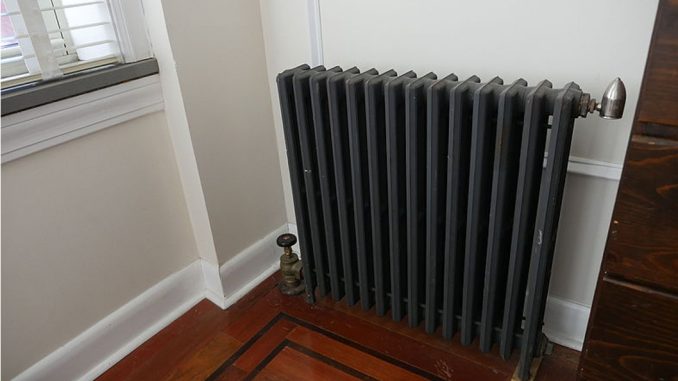
A leaking radiator can often seem like a disaster which can only be tackled by an expert. There is so much to think about when the problem strikes, ranging from protecting floors and walls from water damage to how to afford a repair or even worse, a replacement radiator.
Sometimes, the services of a plumber will be needed when it comes to radiator repair. But it is also possible for you, with the right products and guidance, to fix a leaking radiator yourself. Here is how.
Identifying where your radiator is leaking from
First, you need to identify where exactly the radiator is leaking from. This is the most straightforward part of the entire process. Use a towel to dry out the radiator completely and then cover the controls (the bleed point and thermostatic valve), the body, and the pipes with toilet paper or kitchen roll.
Check the radiator again a short while later and wherever the toilet roll is drenched is the source of the leak. Once you have ascertained the problem area, you can use a bucket or towels to collect the leaking water, protecting floors and carpets from damage.
How to fix a radiator leaking at the bleed point
One of the most common types of radiator leak occurs when there is a problem at the bleed point. Luckily, this is a very simple issue to fix as normally it is caused by a loose fitting.
Try turning the nut on the bleed valve clockwise. If it tightens, then that will often be enough to stop the leak. If you wish to reinforce the seal, then you can wrap PTFE tape around the spindle before tightening.
How to fix a leaking radiator valve
If tightening the bleed point fails to stop the leak, then it can be a sign that the problem is instead coming from a leaking radiator valve.
The valve controls the temperature of the radiator by determining how much water enters the body; the more hot water which flows in, the hotter the radiator and the room it is heating become.
Over time, the wax inside the valve which helps control the process can wear out. When this happens, gaps can occur through which water escapes when the valve is not fully closed. PTFE tape is used to seal these gaps.
To fix a leaking radiator valve, you start by draining the valve of water. Next, you turn off the supply and lock valve, noting how many turns it takes. Catch any escaping water whilst you do this, undo the union nut and open the bleed valve.
Once you reach this stage, you will be confronted by the bleed valve tip. Wrap it in PTFE tape before reassembling the valve and allowing your radiator to fill. If there is no longer any water leaking from the valve, then the repair has been a success.
If you do not feel confident in your skills to fix a leaking radiator valve, then you should speak to a professional plumber about carrying out the job.
How to fix a leaking radiator pipe
Radiator pipes are just as susceptible to springing leaks as any other pipework in the home – which also means they can be repaired via the exact same pipe repair method used on metal pipes in domestic settings.
The most popular way to fix a leaking radiator pipe is with a waterproof pipe repair tape. Pipe repair tape is different to PTFE tape in that it is made from self-fusing silicone which forms a solid rubber band when applied, offering a high pressure seal over the leak area. Silicone tape has high temperature resistance which makes it suitable for use on a radiator system.
For a waterproof repair tape to be effective, you need to be able to get a suitable stretch around the tape during the application. If the damaged pipe is up against a wall or in a confined space, this can be difficult – in which case an epoxy repair putty stick can provide an alternative.
To use an epoxy putty stick, you cut off the amount of putty required and knead it by hand. Once it turns a uniform colour, you push it into the leak area where it will harden to seal the hole in the pipe.
Both types of repair can be overwrapped with a composite repair bandage which will set rock hard when activated by water and applied to the pipe. The bandage offers an impact-resistant layer, turning the repair permanent.
How to fix a hole in a radiator body
When a radiator gets older, its bodies will become more susceptible to holes and cracks appearing through corrosion. As the inside of the radiator becomes corroded, its metalwork begins to weaken and that can eventually lead to breaches.
As a temporary measure, epoxy putty can be used to seal holes in a radiator body in the same way that it seals cracks on pipework.
Unfortunately, the only permanent solution to a leaking radiator body is often a replacement. It is a sign after all that the part in question is coming towards the end of its lifespan – and that you need to call in an expert to help you sort the problem.

Leave a Reply